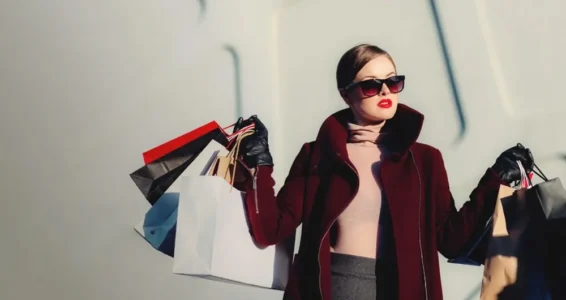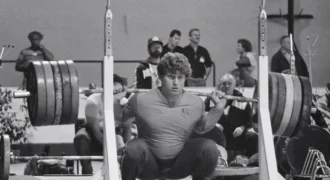From heritage houses to digital couture, luxury fashion is evolving faster than ever—here’s what defines true luxury in 2025.
Introduction: Beyond the Label
Luxury fashion has always existed in a realm of its own—a space where creativity, craftsmanship, and exclusivity merge. For decades, it was defined by names like Chanel, Dior, Gucci, and Hermès. But as we move deeper into the digital age, where values shift and expectations rise, one pressing question emerges: What does luxury really mean today?
Is it a price tag? A logo? A made-to-order gown? Or is luxury now measured in sustainability, tech innovation, and cultural relevance?
Let’s take a closer look inside the modern world of high fashion and unpack the true essence of luxury in 2025.
Heritage Still Matters—But It’s Not Enough
Luxury fashion is still deeply rooted in heritage. Brands like Louis Vuitton and Valentino command global respect because of their rich histories, artisanal legacies, and loyal clientele. A century-old atelier in Paris still holds immense weight.
But in today’s world, heritage alone doesn’t guarantee influence. Modern luxury consumers crave relevance. They’re asking: What are you doing now? How are you evolving? The luxury brands that thrive are those who strike a balance—honoring their past while innovating for the future.
Case in point: Bottega Veneta dropped social media entirely, yet remains one of the most talked-about names in fashion.
Exclusivity in the Age of Accessibility
Once, luxury was exclusive by default. Limited access, invite-only shows, and sky-high prices kept it out of reach for most.
Today, with Instagram reels giving front-row access to Fashion Week and resale platforms like The RealReal and Vestiaire Collective offering entry into luxury at a discount, exclusivity is being redefined.
Modern luxury is less about gatekeeping and more about curation. It’s about offering something that can’t be mass-produced—a limited-run drop, a hand-painted handbag, or a digital couture piece that exists only in the metaverse.
True luxury now lies in the experience and the story, not just the object.
Sustainability: The New Gold Standard
Luxury is no longer exempt from accountability. In 2025, conscious consumerism is driving demand. Gen Z and Millennials—now major luxury consumers—expect more than elegance. They want ethics.
Top houses are responding:
- Stella McCartney continues leading with animal-free innovations.
- Gucci’s Circular Lines are pushing sustainable collections and packaging.
- LVMH is investing in regenerative agriculture and clean materials.
A luxurious garment made with zero waste, minimal environmental impact, and transparent labor practices? That’s luxury 2.0.
As the saying goes, real luxury leaves no trace.
The Rise of Tech-Infused Fashion
Tech has transformed luxury in ways unimaginable a decade ago. From AR try-ons to AI-generated designs, digital disruption is the new runway.
Fashion houses are tapping into:
- Blockchain for authentication (goodbye, counterfeit luxury)
- 3D design software for faster prototyping
- Digital fashion NFTs, as pioneered by brands like Balmain and Dolce & Gabbana
- Metaverse fashion shows, where virtual collections are the main event
In this space, exclusivity exists in pixels, and ownership means both prestige and innovation.
Luxury, it seems, is no longer defined by the physical—but by how you connect, create, and consume.
Personalization is the Pinnacle
The days of “one size fits all” luxury are gone. Today’s affluent consumers want fashion that feels made for them.
From monogrammed handbags to AI-assisted styling services, personalization is the hallmark of modern prestige. Brands like Burberry and Prada now offer bespoke experiences that start online and end with an in-store fitting or delivery of a tailor-made piece.
Luxury is becoming intimate—about connection, not just consumption.
Cultural Relevance is Non-Negotiable
Luxury fashion doesn’t exist in a vacuum. It lives within the zeitgeist. The brands that resonate today are those that engage in meaningful dialogue with culture, identity, and society.
This includes:
- Championing inclusivity on the runway
- Collaborating with diverse designers and artists
- Taking political and environmental stands
Take Telfar, dubbed “not for you—for everyone.” Though not a heritage house, its democratic take on fashion redefines what luxury can be: accessible, empowering, and deeply rooted in purpose.
Luxury is no longer just elite—it must also be aware.
Experience Over Ownership
Today, the experience of luxury often outweighs the product itself. Exclusive events, immersive pop-ups, personalized styling sessions—luxury lives in how it makes you feel.
Whether it’s a digital invitation to a metaverse fashion show or a one-on-one appointment with a stylist in Paris, the luxury lifestyle has become just as important as the product.
As fashion philosopher Pierre-François Le Louët puts it: “Luxury is not something you buy. It’s something you live.”
Final Thoughts: The Evolving Face of Luxury
So—what defines luxury in 2025?
It’s not just the brand, but the values it holds, the impact it creates, and the experience it delivers. Luxury is becoming smarter, greener, more diverse, and more experiential.
In a world where fashion changes with a scroll, true luxury is what stands still—offering depth, identity, and timeless resonance.
As we move forward, one thing is clear: Luxury fashion isn’t about having more—it’s about meaning more.







